Mastering social media marketing: building a strong online presence
Specialists agree that effective social media marketing seems to be the knight in shining armor when it comes to building a strong online presence. But is it? Some numbers beg to differ, and I don’t believe we can ignore them.
With over 80% of consumers reporting that social media especially influencer content significantly impacts buying decisions, marketers across industries are driving the evolution of social media marketing (SMM) from a stand-alone tool to a multipronged source of marketing intelligence on an increasingly important and growing audience.
As the use of social media trends upward, marketers are perfecting strategies to capture the significant competitive advantage that engagement with this key audience can deliver even more rapidly and more effectively than traditional marketing.
In this article, you’ll learn how to create a strong online presence through effective social media marketing.

What is social media marketing?
Social media marketing is all about meeting your target audience and customers where they are and as they socially interact with each other and your brand.
While social media marketing as a whole is incredibly valuable and beneficial to your business growth, your strategy will differ based on which social networks your audience spends their time on.
So how then can you build a compelling online presence through social media marketing? Let’s have a look at some ideas.
1. Craft engaging social media content
Social media is a haven for massive growth. This is why many business owners hire social media managers to build a strong online presence and cultivate loyal audiences they can sell to. Your role as a social media manager involves creating engaging and relevant content for your target audience.

To achieve that and make your client’s brand more appealing to customers, here are some proactive steps you can take. You’ll also learn how to synchronize content across different media channels to create the perfect marketing platform.
- Identify your social media goals: Creating engaging social media content goes beyond being entertaining and trendy. It should also be in sync with your social media goals. By mapping out what you want to achieve on social media, you’ll be able to create content that drives the right traffic toward you.
While being entertaining and informative with social media content, you should be strategic enough to drive attention to the services provided by that brand. You can start by brainstorming to achieve SMART goals and creating content that aligns with these goals.
Setting SMART goals includes stating what the success of these social media activities would look like, all things being equal. Also, determine the duration you intend to achieve these goals because it will help to tell when to switch content type for the next phase in the selling process. - Learn about your target audience interests: Learning about your target audience’s interests is another important step to creating engaging social media content, and one of the best ways to do this is by asking questions. As a social media manager, this is the part where you get to know your target audience better. It involves reading your audience’s emotions and understanding their interest in asking for feedback.
Creating content that appeals to their emotions helps to build a connection between them and the brand you represent. Always remember to advertise the value of the brand’s services rather than its features. They want to know how you can solve their problems, so it would help to focus on their needs instead.
You can use a few resources like AnswerThePublic.com, BuzzSumo, and Google Trends to conduct your research. These resources use AI to correlate possible queries from the target audience in your niche. Using them gives you an idea of what content would appeal to your audience, which would help form a blueprint for future social media content. - Provide Relevant Social Media Content: When you have discovered your target audience’s interest, the next step is to create social media content tailored to them. Before making posts online, search for content ideas that would be valuable to your audience.
Each content you create should address their pain points and resonate with their values. And with the results of your study online, answer questions you think they might have. Humans naturally tilt towards areas that are highly beneficial to them and actionable.
Over the years, informative content has been shown to draw high engagement with the audience. In addition, you can share tips and advice and post customer reviews that depict how well the brand is working for others.
Finally, it helps to understand the reaction of your audience across different platforms. Promoting a brand by increasing engagement on Facebook differs greatly from how it is done on LinkedIn. You’ll need to learn to read the room, understand what works, and act accordingly. - Use Informational Infographics: Unlike written posts, infographics serve as visual hooks for engaging your audience. They help to connect the idea of the posts and content you create with your audience’s visual and imaginative thinking. And like every content type, informational infographics need to be topically relevant to the target audience to pull the kind of engagement you desire.
In addition, you should use infographics with a clear headline because that’s the first thing they will likely see as they scroll through your content. One tip to take note of is that having a clear and central message is one of the things that make a good infographic and bolster content engagement.
The best way to use infographics is when presenting case studies and informational content for your target audience. You want to also use them in ways that establish credibility for the brand you represent. So beyond boosting engagement on social media, you’re promoting the brand as a reliable source for solutions to pain points in their target market. - Respond to Feedback: While it is great to find out about your audience preferences and ask for feedback, it would be in vain if you ignore them and fail to act. You’ll learn what appeals to the online community by analyzing constructive feedback.
As a social media manager, the idea is to improve your brand’s awareness. That includes taking feedback from the audience even naysayers and convincing them of your brand’s reliability and efficiency.
Asides from that, responding to feedback on the comments also helps to create a connection with the audience. People incline to brands that are truly interested in them, and when you respond to their queries, you build trust with them.
The best part is that this has a domino effect because they are most likely to engage when you make social media content in the future due to the level of your responsiveness. - Make Original and Real-Time Content: Making original content helps you stand out amongst the noise on social media. As a social media manager, learning to be creative when producing content for social media is important because the beauty of the content you share lies in its diversity. So, you don’t want to bore the audience you intend to sell to.
Real-time content means creating never-seen-before, fresh content around the brand service you represent. The trick to doing this is by searching for new ideas or revamping evergreen content using different styles.
You can experiment using videos, images, and words to create original content at this stage. It’s also important to map out a content strategy to avoid repeating content unnecessarily. With a content strategy, you can carefully craft content that appeals to your target audience.
2. Leverage your user-generated content
User generated content (UGC) can come in lots of different forms. Basically, anywhere your users are talking about your brand is potential UGC. For instance, one of your customers might photograph your product and post it on Instagram with a complimentary comment that’s UGC. Maybe a customer wrote a review of your product on your website, that’s UGC too.

Other methods can be videos, blog posts, testimonials, social posts, letters to the editor, live streams and even podcasts. These ordinary people are not professional marketers and often tag the brand they’re discussing, but not always. So marketers need to keep a lookout for quality UGC, whether or not users tag them.
Examples of User-Generated Content Campaigns
In 2014, Starbucks launched the White Cup Contest. The competition asked users to put on their artist hats, decorate a white Starbucks cup and then submit a photo of their design using the hashtag #WhiteCupContest. In three weeks, Starbucks received over 4,000 entries. The winner’s design was then available for purchase as a limited-edition reusable plastic cup.
Another example of great UGC comes from the beloved brand Lego. It’s Lego Ideas marketing campaign asked users to submit their own ideas for a brand-new Lego set. However, the user with the big idea has to independently gain the support of 10,000 other people in order for Lego to even consider the design.
Parachute, known for their plush towels and bedding, uses UGC in its traditional ad campaigns, reducing ad spend significantly. Using the #MyParachuteHome hashtag, the brand asks users to submit photos of their living spaces decorated with Parachute products. The brand features real people and their homes on insert cards packed in customer orders, digital ad campaigns and more.
Why User-Generated Content is Good for Your Brand
Leveraging your UGC gives customers the opportunity to participate with your brand rather than being a spectator. This increases their engagement, brand loyalty and allows them to be part of the community.
Additionally, this modern form of word-of-mouth marketing is more influential than traditional efforts: 80% of consumers report that UGC impacts their buying decisions more than other kinds of marketing content, according to Stackla.
UGC provides a human approach to your marketing and helps to build trust between you and your customers. Not only can it provide you with free marketing content, UGC can also offer brands diverse and creative content and a look into what their customers truly want.
Five Ways to Leverage User-Generated Content
First things first, before you can actually use any of your UGC, you need to ask for the user’s permission. Send a simple direct message or an email to the creator to get their approval to repost their content.
- Ask customers for reviews: On your website and social posts, invite users to review your products. You can then use the comments as featured quotes on your website or on a testimonial page.
- Encourage your staff to participate: According to Weber Shandwick, 33% of employees will post messages, pictures, or videos about their employer without any encouragement from their company, but with direct company encouragement, that increased to 50%.
- Publish a guest column or blog: A great idea, especially for member organizations, this gives subject matter experts within your membership an opportunity to support your content program and increase their own visibility and recognition.
- Create a hashtag contest: Similar to the #WhiteCupContest, you can create a hashtag then ask users to submit photos with your products using the hashtag. Encourage participation by offering a prize to the winner.
- Use UGC in email campaigns: Include images of users’ social posts or quote reviews and testimonials in an email campaign to customers asking them to subscribe and share their own photos.
3. Collaborating with influencers
Influencer marketing, also known as brand partnerships, involves the collaboration with influencers with the aim to expand the reach of your brand on social media. Like any partnership, both brands and influencers require communication, collaboration, and nurturing to thrive and grow.

As more and more companies are investing in their influencer marketing network, it is important to ensure that your brand identity is not lost. To help your brand stand out from others and achieve the highest quality results possible, we recommend treating your influencer collaborations differently from other paid media campaigns.
Furthermore, getting the best from your influencers requires being a true collaborator throughout the partnership life cycle. Your active engagement will not only increase the effectiveness of your influencer campaigns but will also strengthen your relationship with the influencers you choose. Plus, when you can build on your initial success in future campaigns and understand what works and what doesn’t, you can make the most out of your partnerships.
Here are tips for successful brand collaborations with influencers
- Determine your goals: It’s not just about finding or knowing how to negotiate with influencers it’s important to have a clear workflow for each stage of your campaign lifecycle so you can maximize your marketing efforts. KPIs for influencer marketing campaigns are often slightly different than those of other partnership types, leaning more towards first-touch and brand awareness models. Remember to agree on an attribution model before you start your campaign.
- Get to know your influencers on a personal level: Similar to welcoming a new employee, creating a team dynamic with the influencer you’re working with is the first step to a successful partnership. Driving authentic relationships by creating a smooth onboarding process can help each influencer to feel connected to the brand and provide them with the tools they need to create powerful and authentic content.
- Do not adopt a one-size-fits-all approach: An effective influencer marketing strategy requires you to speak to the right people, using the right tools as well as influencers. The first step is to define who your target audience for this specific campaign is. Once you have identified your target audience, you can create a matching set of influencer personas to help you understand the qualities you’re looking for in an influencer.
- Automate your influencer partnership campaign: Manually managing your influencer campaign is exceedingly time-consuming, inefficient, and often inaccurate. At Impact, we recommend investing in partnership marketing tools that will automate the process and give you a complete view of the full partnership lifecycle.
- Measure your partner’s performance metrics carefully: Given the investment enterprises are making in their influencer programs, the degree to which they are hands-off is somewhat shocking. Only 18% of companies feel able to measure the ROI of influencer campaigns, and 86% don’t even understand how influencers calculate their fees.
Hence it is important to be clear on the metrics that will give you an accurate picture of your brand partnerships and influencer campaigns based on your objectives, and use the right tools to analyze data as well as track the full customer journey across devices. - Clear communication: Good communication is important to maintain influencer partnerships. Keep them in the loop at Good communication is key to maintaining influencer partnerships. We recommend keeping them in the loop at every step of the way with relevant updates. Having a smarter influencer marketing strategy can help you get see major gains in revenue and ROAS.
- Diversify your partner program:
To ensure that your campaign is both targeted and wide-reaching, it is recommended to Implement a mix of micro-and macro-influencers.
4. Implementing social media contest
Social media contests come in many shapes and sizes. Sometimes, they are part of larger, structured campaigns, with Goals and KPIs. And other times they are simply one-offs for a very specific purpose.
Types of contests
Your social media objectives and the social network you’re using should determine which type of contest you run. Let’s say you have a short term objective to seed interest for an upcoming product announcement or to generate more audience engagement as end-of-quarter approaches.
With these Objectives in mind, you could run for example, a Facebook timeline contest that spurs your followers to submit the ‘funniest caption’ or tagline for a photo.
Or run a hashtag contest on Instagram by asking your followers to submit their best photo from an event you held with a custom hashtag. On Twitter, you could offer a prize to the person who submits the best name for a new product that’s under development. Simple Contests like these can produce useful user-generated content or product insights with minimal time invested.

How to implement your social media contest;
- Make an Announcement: Leverage your social networks. Don’t just announce that you’re having a contest on Pinterest; tell your followers on Twitter, your fans on Facebook, and your following on Instagram, too. Depending on the length of the contest, you should make social promotion a regular part of your social media schedule to encourage participation.
- Clearly Articulate the Rules of the Contest: Whether you’re asking entrants to create a whole new board for your contest, like Garnet Hill, or you want them to simply repin one image, let participants know so they can follow your rules properly. Include a bullet point list of the rules right on a repinnable image. Behind the image, include a link to more details about your contest using a landing page on your website.
- Remember Your Goals and Measure Your Results: Tailor your contest to suit your goals and measure your results accordingly. For example, if you are looking to generate leads and you could care less about engagement, you wouldn’t measure reach. If you align your goals and metrics with your contest, you’ll be much more successful in the long-run.
- Use a Pre-Defined Hashtag to Find Submissions: Use a hashtag so people can follow the contest entries on Pinterest. This will help spread the word about your contest, and it can also help you find participants. If you’re requiring entrants to create a board for your contest, have them use a pre-defined hashtag on their images so it’s easy to find. Or are they simply repining the original contest image? That’s easy — just click on the pin to see who repined it!
- Have a Prize Your Audience Will Love: If participants are creating an entire board on their Pinterest account dedicated to your company, you’ll need to give away something really awesome. The more effort your participants need to put in, the better the prize should be. You will get fewer participants with a contest giving away a koozie than a contest giving away an entire bedroom set. Plus, a prize like a beautiful new bedroom set plays right into the interests of Pinterest users — beautiful, visual items.
Using social media in marketing does more than improve your site traffic and reach. It turns your business into a personality that your audience can communicate and connect with on a deeper level.
Regardless of which platforms you use or how you use them, the most important thing to remember is that social media is not a platform to pitch your business. It’s a community for you to express your personality, demonstrate your values, share useful information, and build up those around you. With people naturally following you and promoting your content, there will be no need for pitching. And with this approach, you’ll achieve not just your business goals but all of the other intangibles that translate to gratification and fulfillment.









